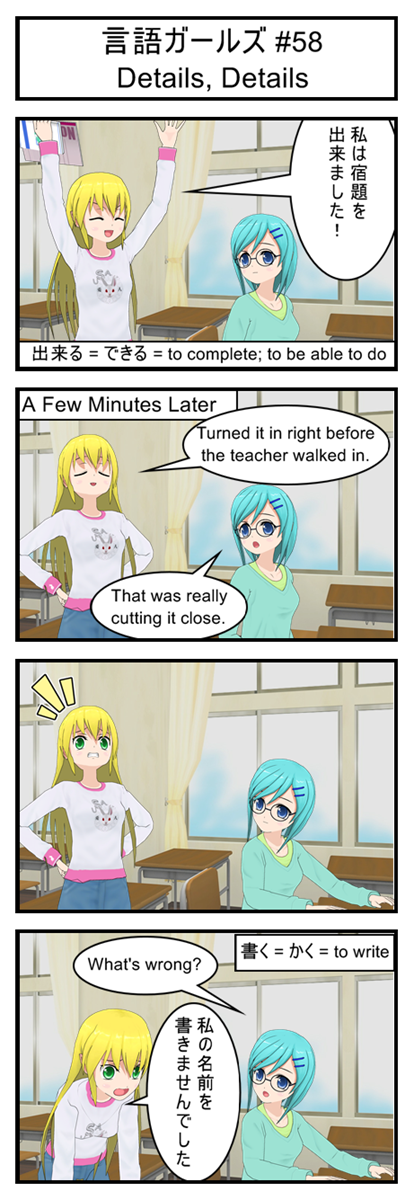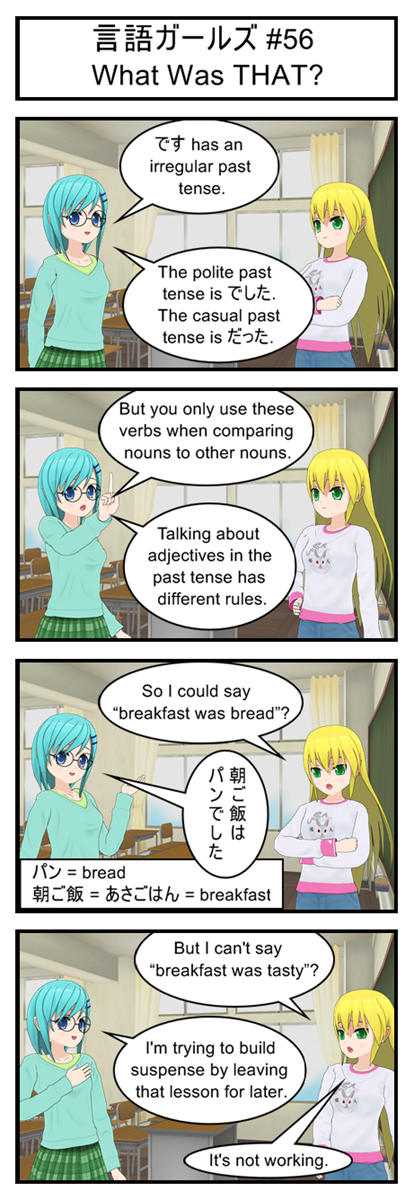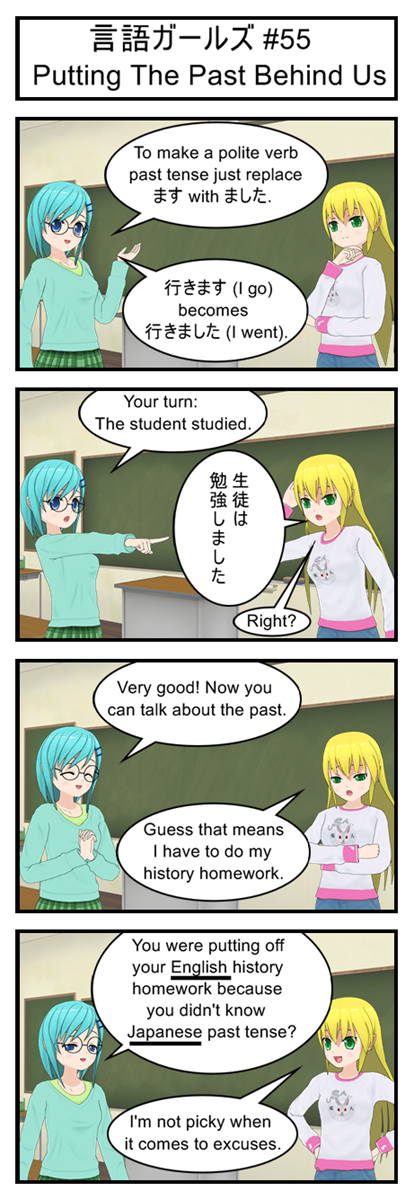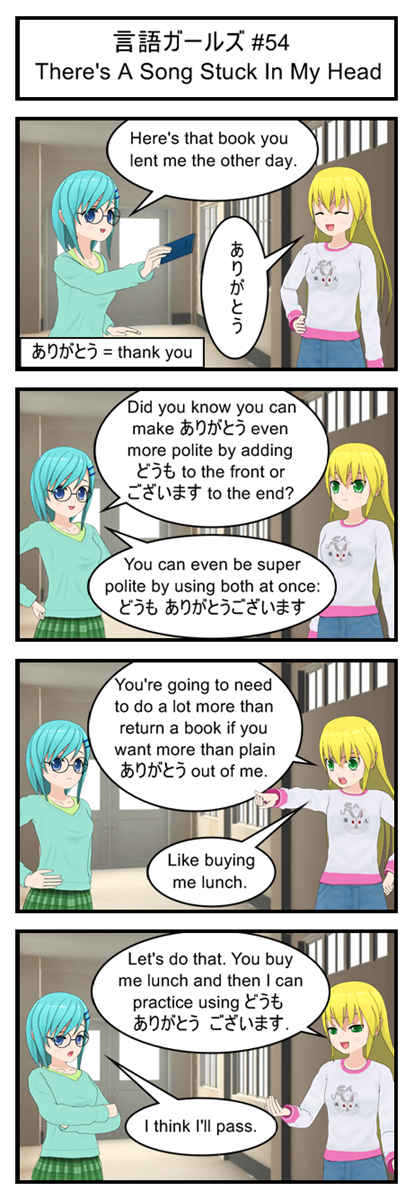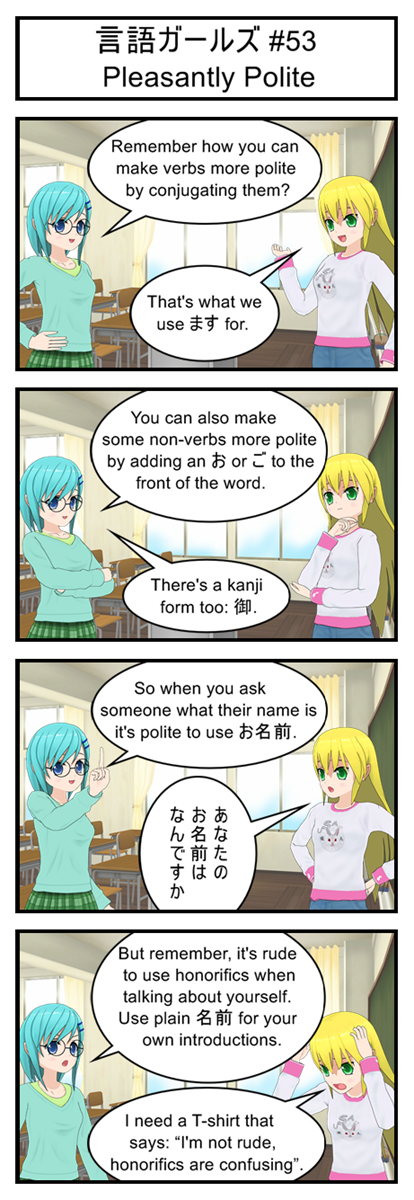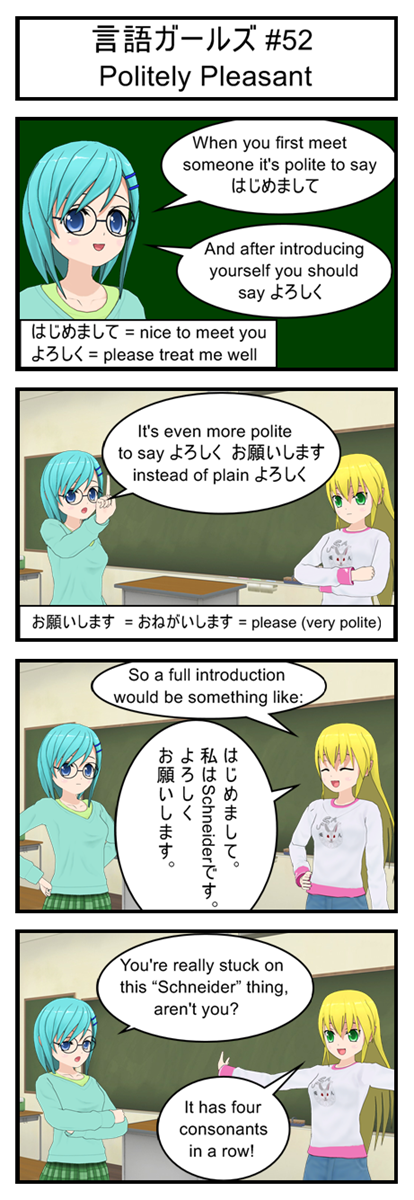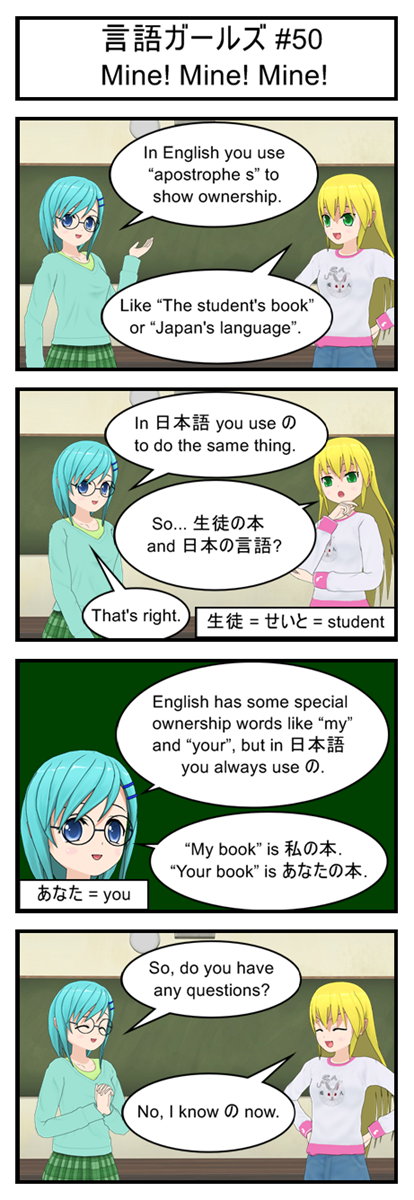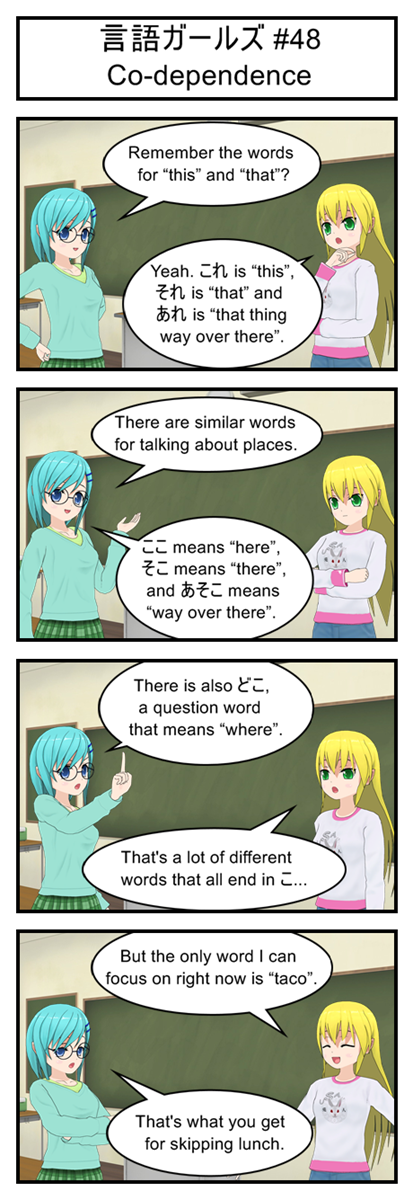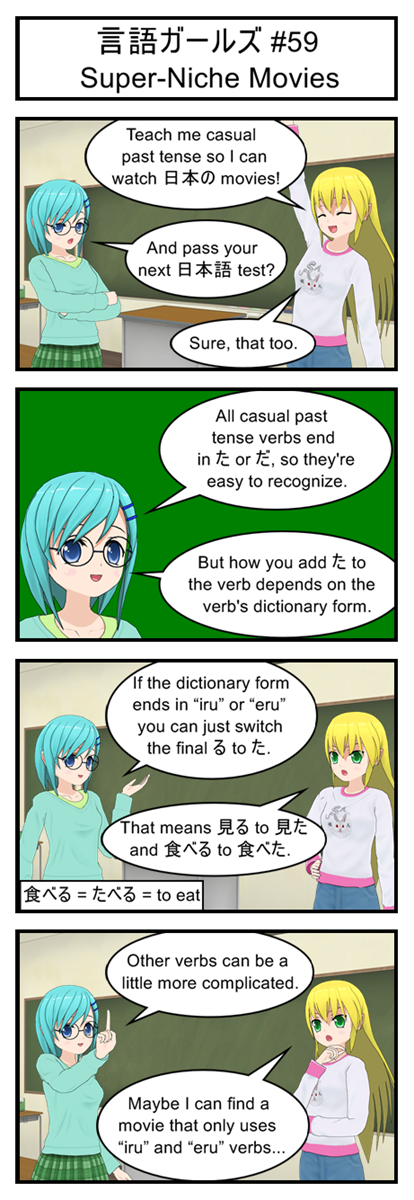
You might think casual past tense isn’t that important for speaking formal Japanese, but it uses the same basic rules as another incredibly important piece of grammar that you absolutely can’t speak Japanese without. So memorize all these past tense rules; you’re going to need them again in just a few more strips.
Vocabulary
食べる = たべる = to eat
Transcript
言語ガールズ #59
Super-Niche Movies
Yellow: Teach me casual past tense so I can watch 日本の movies!
Blue: And pass your next 日本語 test?
Yellow: Sure, that too.
Blue: All casual past tense verbs end in た or だ, so they’re easy to recognize.
Blue: But how you add た to the verb depends on the verb’s dictionary form.
Blue: If the dictionary form ends in “iru” or “eru” you can just switch the final る to た.
Yellow: That means 見る to 見た and 食べる to 食べた.
Blue: Other verbs can be a little more complicated.
Yellow: Maybe I can find a movie that only uses “iru” and “eru” verbs…
